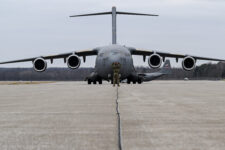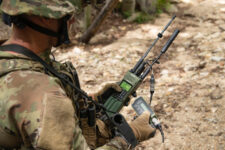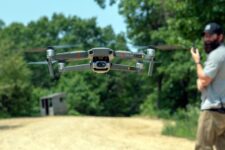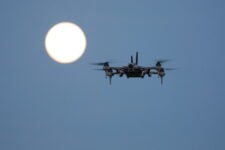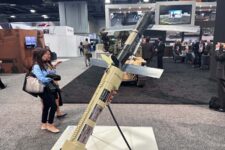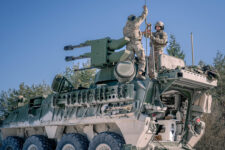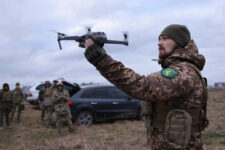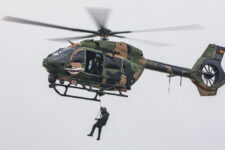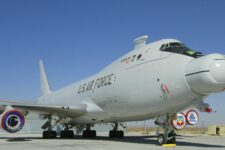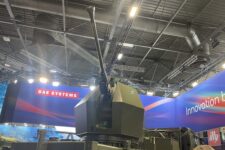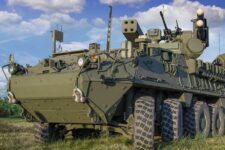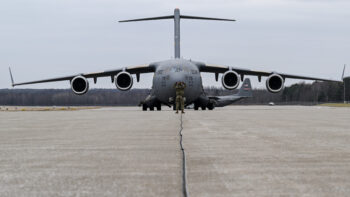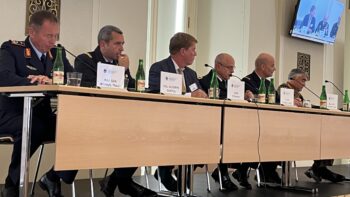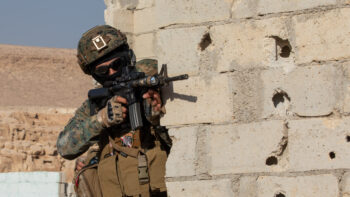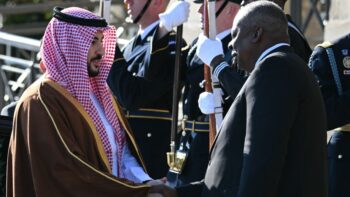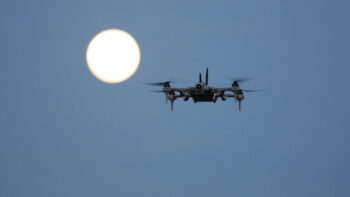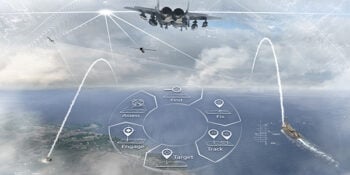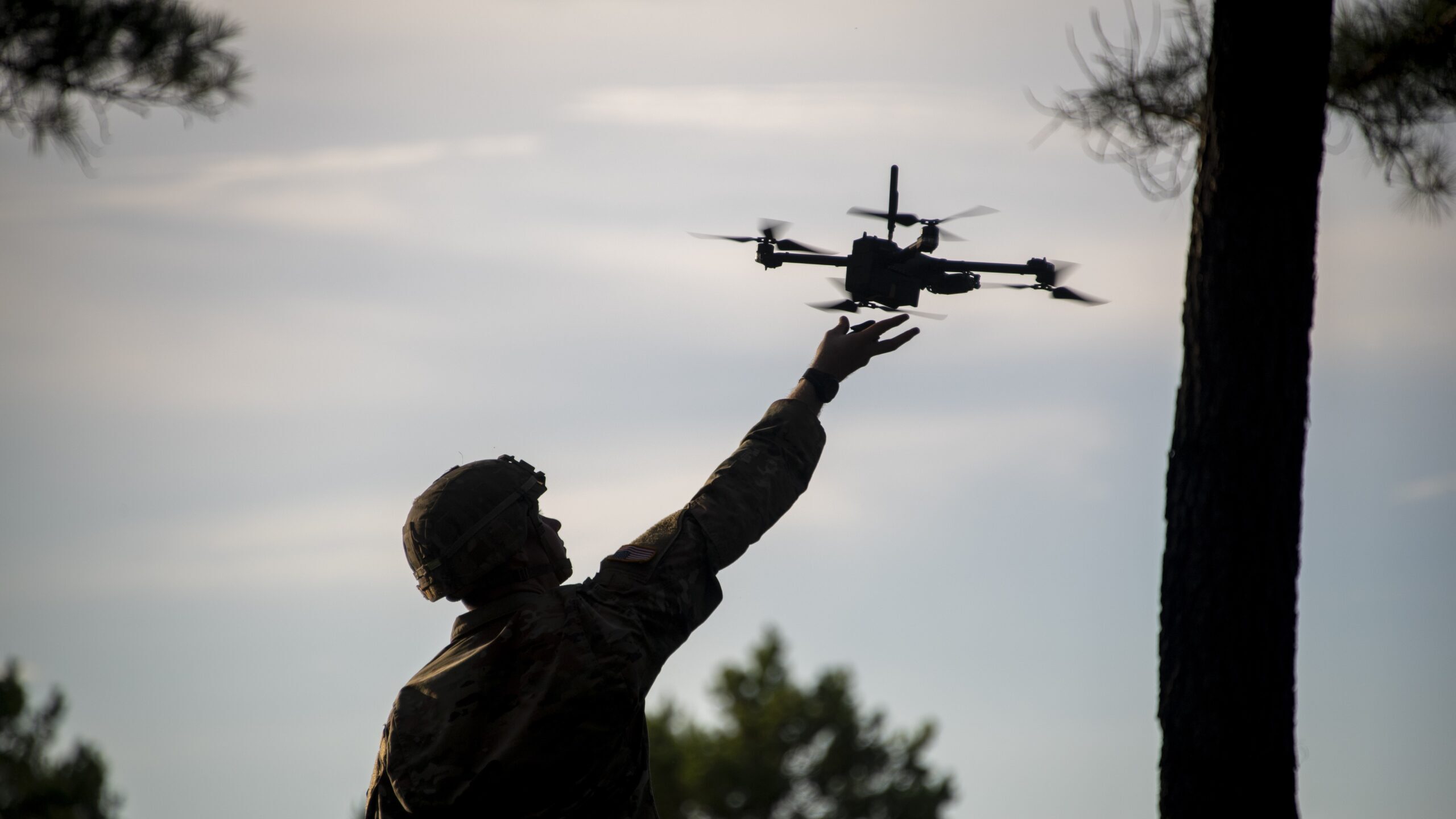
A soldier tests a candidate for the Army’s Short-Range Reconnaissance (SRR) drone in 2020 (photo by Mr. Tad Browning, US Army Operational Test Command)
WASHINGTON — One year after it was stood up as an innovation cell for US Air Forces Central (AFCENT), Task Force 99 already has nearly 100 uncrewed systems, consisting of 13 types, “either on order or on hand,” according to AFCENT’s commander — including candidates that could support the Pentagon’s larger Replicator initiative.
But that task force, made up of about 15 people, is constrained in its ability to scale up its operations, said Air Force Lt. Gen. Alexus Grynkewich, a situation he is optimistic Replicator can change.
“I think what Replicator will do is help us make that shift,” Grynkewich said today during a breakfast hosted by the Defense Writers Group. “It will help us understand a couple of different sides of this.”
The Replicator effort, for which the Pentagon aims to field thousands of drones within two years, will help identify barriers to scaling up production of certain systems, explore new ways to train troops and even furnish new doctrine, Grynkewich said. For example, some units will need to operate multiple different types of drones, raising questions about how operations will be structured.
“How do you even build that into our DNA and our overall organizational architecture?” he asked. “I think those are a lot of things that we’ll learn as we go through this.”
RELATED: ‘Replicator’ revealed: Pentagon initiative to counter China with mass-produced autonomous systems
Grynkewich said that Task Force 99, a team that includes five partner countries with possibly more to follow, also “nests very well with” Replicator, and has even offered up a candidate unmanned system to the initiative to scale up for production, though he didn’t identify it by name.
The general explained that the task force has three different mission areas for its drones: air domain awareness, reconnaissance (ISR) and what he called “imposing dilemmas” on adversaries, such as one-way kinetic attacks or spectrum warfare. Some of those drones have proven useful on the battlefield, according to the commander, performing ISR missions that can get around an MQ-9 Reaper’s limitations by flying below cloud decks that could obscure a Reaper’s view.
“So that’s one use case that we’ve really started to flesh out and one that we are proposing… for this Replicator” initiative, he said.
Task Force 99’s small team has found other ways to innovate, Grynkewich said, including by crafting a new, 3D printed drone for just $2,500. Called Kestrel, the drone has a 100 kilometer range and can carry a three kilogram payload. (Grynkewich said the payload isn’t included in the sticker price.)
RELATED: Could the UK replicate ‘Replicator’? ‘Absolutely,’ says BAE FalconWorks
Beyond unmanned systems themselves, AFCENT is also pursuing some relatively unconventional new tools to help warfighting, particularly in air domain awareness. Grynkewich pointed to a new smartphone app developed by MITRE in partnership with AFCENT and ARCENT (Army Central) called Carpe Dronvm, Latin for “seize the drone.” Users who spot a drone can log it in the app as a “crowdsource detection tool,” Grynkewich said, which can help keep track of small, low-flying drones that are otherwise hard to spot.
That same technology could be incorporated in base defense cameras, according to Grynkewich, though it’ll probably be some time until that happens.
“There’s some exciting technologies like that that I think will play out. We’re not at the point yet where we can scale that and share it with the broad public, but we’re working on that. I think that’ll be the next step,” he said.
Air Force mobility fleet seeks on-board defenses against small drones
Air Mobility Command documents say they’re interested counter-drone systems, including platforms that can operate near friendly aircraft, so as not to hypothetically accidentally jam or spoof a nearby vice president’s plane.
